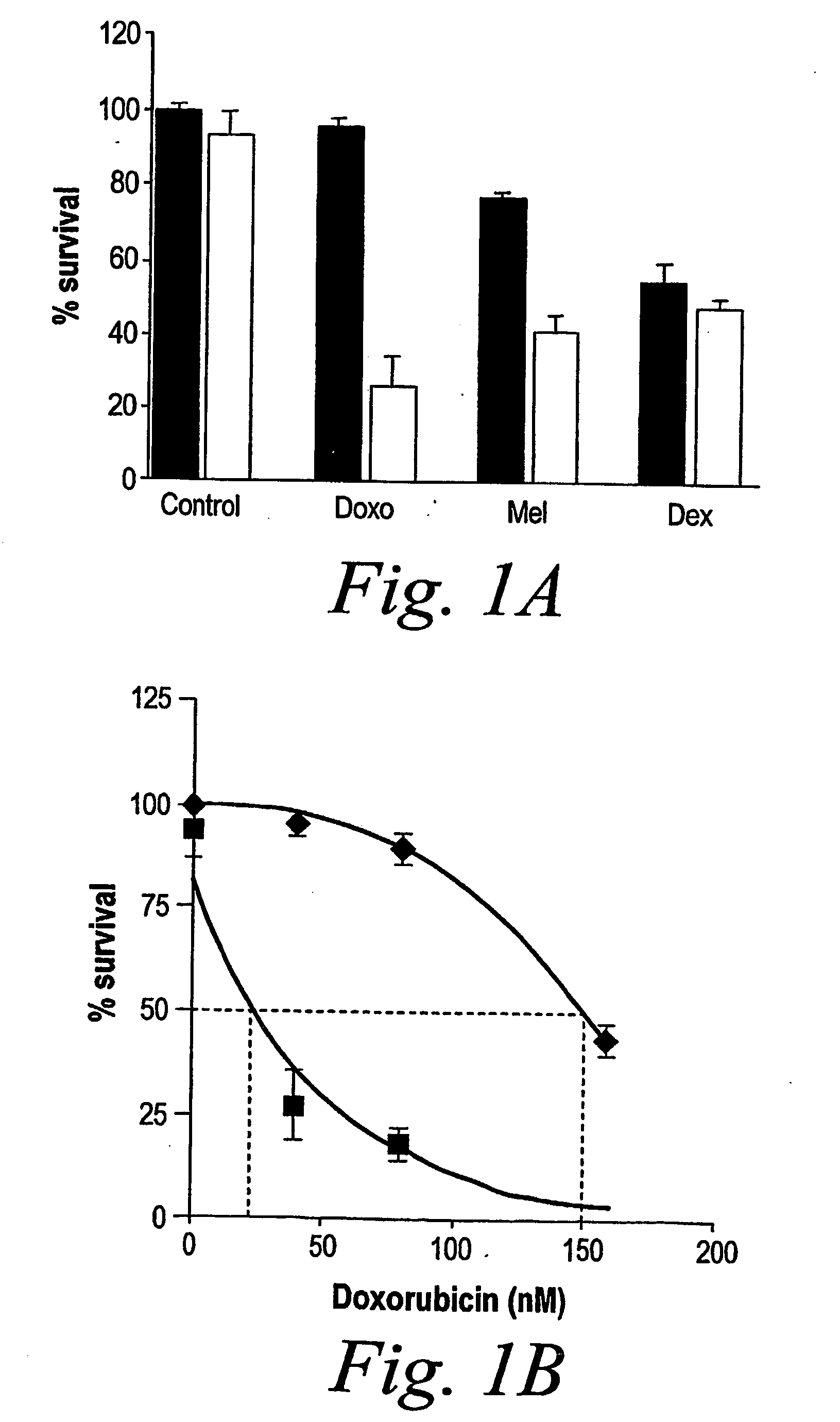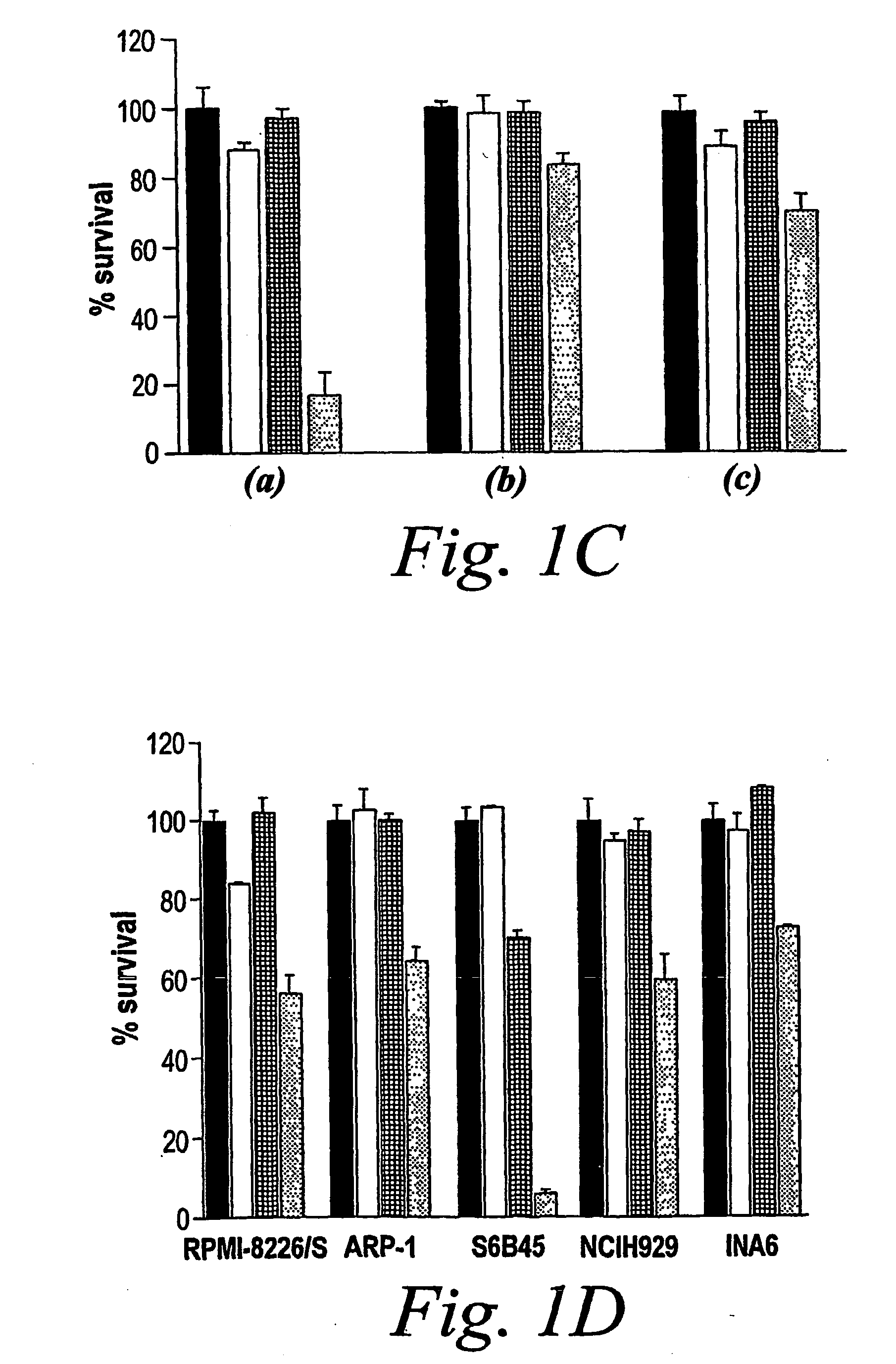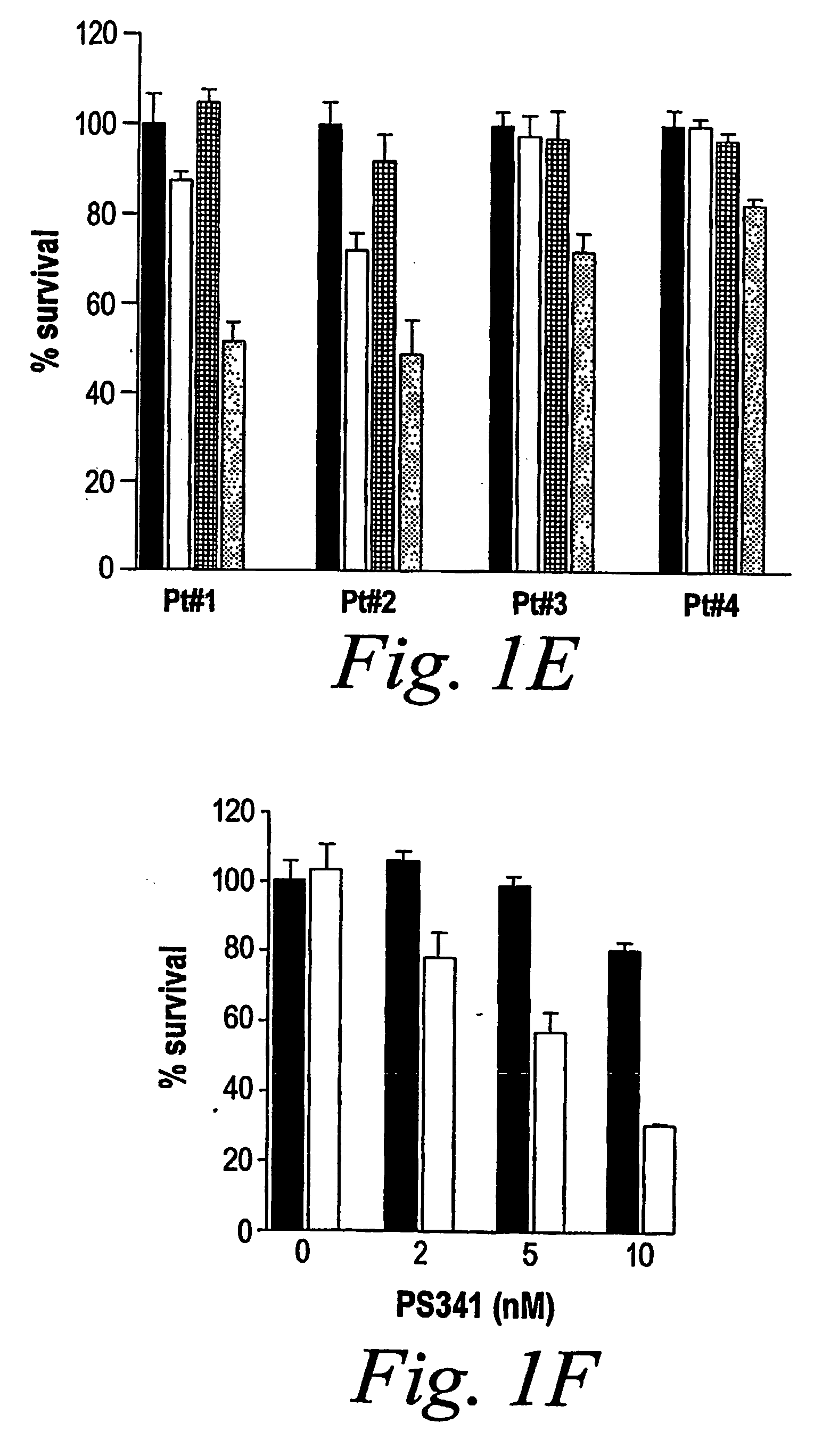Methods and compositions for treating cancer using proteasome inhibitors
a proteasome inhibitor and composition technology, applied in the field of methods and compositions for treating cancer using proteasome inhibitors, can solve the problems of few cures for treating the various types of cancer, few and many known chemotherapeutic agents used for the treatment of cancer display significant side effects, etc., to achieve the effect of restoring cancer cell sensitivity to therapeutic agents, inhibiting genotoxic stress response pathways, and restoring cancer cell
- Summary
- Abstract
- Description
- Claims
- Application Information
AI Technical Summary
Benefits of technology
Problems solved by technology
Method used
Image
Examples
example 1
Subtoxic Concentrations of PS-341 Enhance Sensitivity of Cancer Cells to Chemotherapeutic Agents
[0106] MM.1S cells were pretreated with doxorubicin (40 nM), melphalan (1 μM) or dexamethasone (0.5 μM) for 24 h, and then PS-341 (2 nM) was added for an additional 24 hours. As shown in FIG. 1A, PS-341, at a subtoxic concentration, markedly enhances sensitivity of MM.1S cells to subtoxic concentrations of doxorubicin and to melphalan (P<0.001 in both cases) (black bars: without PS-341, white bars: with PS-341). Thus, PS-341 sensitizes MM.1S cells to DNA-damaging chemotherapy.
[0107] However, the subtoxic concentration of PS-341 did not increase the anti-MM effect of dexamethasone (P>0.05). Thus, only additive cytotoxicity exists between PS-341 and dexamethasone.
example 2
PS-341 Decreases the LD50 of Doxorubicin
[0108] Dose-response analysis for the effect of doxorubicin on MM. IS cells in the presence or absence of PS341 (2 nM) was performed. As shown in FIG. 1B, the LD50 for doxorubicin in MM.1S cells was 150 nM in the absence and 26 nM in the presence of PS-341 (2 nM). Thus, PS-341 decreases the LD50 of doxorubicin from 150 to 26 nM. The concentration of PS-341 is 10-30 nM in patients' serum, with peaks of 100 nM, which is sufficient to achieve this synergistic effect in vivo.
example 3
The Sequence of Administration of Doxorubicin and PS-341 Impacts their Synergistic Anti-MM Effect
[0109] Whether the sequence of administration of doxorubicin and PS-341 impacts their synergistic anti-MM effect was studied. The following experiments were performed. MM.1S cells were (a) pre-treated with doxorubicin (50 ng / ml) for 24 h and then PS-341 (2 nM) was added for an additional 24 h; or (b) pre-treated with PS-341 for 24 h and then doxorubicin for an additional 24 h; or (c) treated with PS-341 and doxorubicin together for 24 h. As shown in FIG. 1C, although the combination of PS-341 and doxorubicin was more potent than either drug alone under any of these conditions (P<0.05 in all cases), the most pronounced synergy was observed when MM cells are pre-treated with doxorubicin followed by PS-341. Thus, in all cases a synergistic effect is found, but the strongest synergy is observed when the cells are pretreated with doxorubicin followed by PS-341 treatment.
PUM
| Property | Measurement | Unit |
|---|---|---|
| drug-resistance | aaaaa | aaaaa |
| genotoxic stress | aaaaa | aaaaa |
| body surface area | aaaaa | aaaaa |
Abstract
Description
Claims
Application Information
 Login to View More
Login to View More - R&D
- Intellectual Property
- Life Sciences
- Materials
- Tech Scout
- Unparalleled Data Quality
- Higher Quality Content
- 60% Fewer Hallucinations
Browse by: Latest US Patents, China's latest patents, Technical Efficacy Thesaurus, Application Domain, Technology Topic, Popular Technical Reports.
© 2025 PatSnap. All rights reserved.Legal|Privacy policy|Modern Slavery Act Transparency Statement|Sitemap|About US| Contact US: help@patsnap.com



